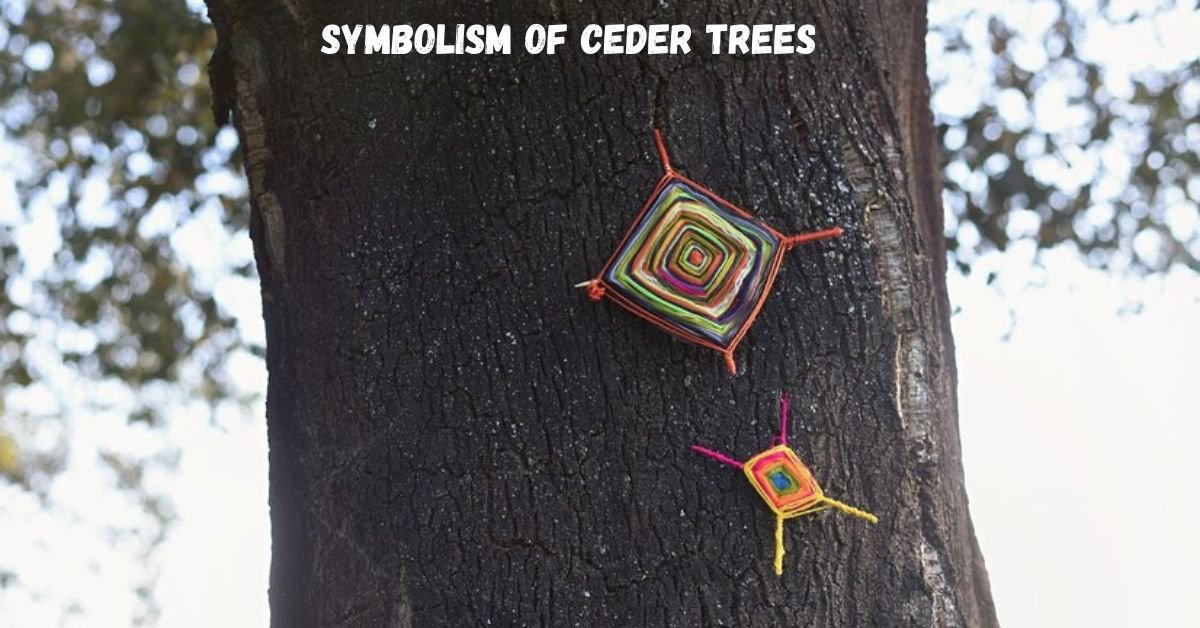Introduction
Ceder trees, majestic and towering, have long captured the imagination of cultures worldwide. Known for their strength, durability, and aromatic wood, they have held a deep symbolism in various religious, cultural, and historical contexts. This article will explore the multifaceted symbolism of ceder trees, delving into their significance in ancient mythologies, religious texts, and their role in modern symbolism.
1. The Cultural Significance of Ceder Trees
Ceder trees have been revered by many civilizations, especially those in the Middle East, Mediterranean, and North America. In ancient cultures, these trees symbolized purity, immortality, and strength.
Ancient Egypt:
In Ancient Egypt, the ceder tree was a symbol of the gods. The wood was often used in the construction of temples and sarcophagi, signifying eternal life and spiritual protection.
Ancient Mesopotamia:
In Sumerian, Akkadian, and Babylonian cultures, people saw cedar trees as a symbol of the divine. The famous Epic of Gilgamesh, one of the earliest known literary works, features the cedar forests of Lebanon, which people regarded as a sacred space.
The Bible:
Ceder trees are mentioned numerous times in the Bible. In the Old Testament, they are often seen as a symbol of strength and righteousness. For example, in Psalm 92:12, it says, “The righteous will flourish like a palm tree, they will grow like a cedar of Lebanon.” The ceders of Lebanon, in particular, were prized for their durability and fragrance, often used in building important structures such as Solomon’s temple.
2. Spiritual and Religious Symbolism of Ceder Trees
Ceder trees hold spiritual significance in many religious traditions. They are seen as symbols of purification, healing, and divine connection.
Judaism and Christianity:
In the Bible, writers use the cedar tree as a metaphor for strength and resilience. In Christian thought, people see the cedar tree as a symbol of the enduring power of faith. It represents a foundation that cannot easily uproot, much like a steadfast belief.
Native American Symbolism:
Many Native American tribes, such as the Chinook and the Navajo, view cedar trees as sacred and connected to the spirit world. People often use cedar in purification rituals and healing ceremonies. They also consider it a protective symbol and use it to create totem poles and sacred objects.
3. Ceder Trees in Modern Symbolism
In contemporary culture, the symbolism of ceder trees has evolved but continues to reflect their ancient roots. The tree’s symbolism is often associated with personal growth, resilience, and the importance of staying grounded.
Personal Growth and Strength:
In modern contexts, people often associate the cedar tree with personal growth and the ability to overcome adversity. It serves as a reminder of inner strength and perseverance through challenges.
Environmental Symbolism:
Ceder trees are also symbolic of environmental preservation. People consider cedar trees vital to ecosystems and often use them as emblems in environmental activism to represent the importance of maintaining healthy forests and combating deforestation.
4. The Ceder Tree in Art and Literature
Throughout history, artists, poets, and writers have featured the cedar tree as a symbol of beauty, strength, and connection to nature.
Literature:
The cedar tree often appears in poems and novels, symbolizing endurance, ancient wisdom, and the passing of time. In many works of literature, the cedar represents both the natural world and the sacred, bridging the gap between the earthly and divine.
Art:
Ceder trees have also been a popular subject in visual art. Many Indigenous cultures use cedar in their carvings and artwork, portraying the tree as a central element in their cultural identity.
5. The Healing Power of Ceder Trees
Apart from their cultural and spiritual symbolism, people use cedar trees for their healing properties. They extract essential oils from cedarwood for aromatherapy, which helps promote relaxation and relieve stress. Cedarwood also purifies, enhances mental clarity, and grounds the mind.
Aromatherapy and Health Benefits:
People frequently use cedarwood essential oil to promote calmness, help with insomnia, and improve focus. Its natural aroma grounds the mind and enhances spiritual connection during meditation practices.
6. Comparison Chart: Symbolism of Ceder Trees Across Cultures
| Culture/Tradition | Symbolism | Usage |
|---|---|---|
| Ancient Egypt | Divine protection, eternal life | Used in the construction of temples and sarcophagi, symbolic of spiritual immortality. |
| Biblical (Judaism/Christianity) | Strength, righteousness, endurance | Represented in Psalms as a symbol of flourishing faith and used in building Solomon’s temple. |
| Native American | Purification, protection, connection to the spirit world | Cedar used in purification ceremonies, totem poles, and spiritual rituals. |
| Modern Environmentalism | Resilience, environmental preservation, interconnectedness with nature | Symbol of environmental health and importance of forest conservation. |
| Aromatherapy | Healing, grounding, mental clarity, relaxation | Cedarwood essential oil used for stress relief, meditation, and mental well-being. |
Conclusion
The symbolism of ceder trees is rich and varied, spanning centuries and cultures. From their representation of divine strength and resilience in ancient traditions to their role in modern environmental and personal growth contexts, cedars continue to hold a powerful place in both the natural and symbolic worlds. Whether seen as a symbol of spiritual endurance or as a tree that provides healing and peace, the cedar’s legacy endures across generations.
By exploring the multifaceted significance of the cedar tree, we gain a deeper understanding of its timeless relevance and its continued place in our cultural, spiritual, and environmental consciousness.

